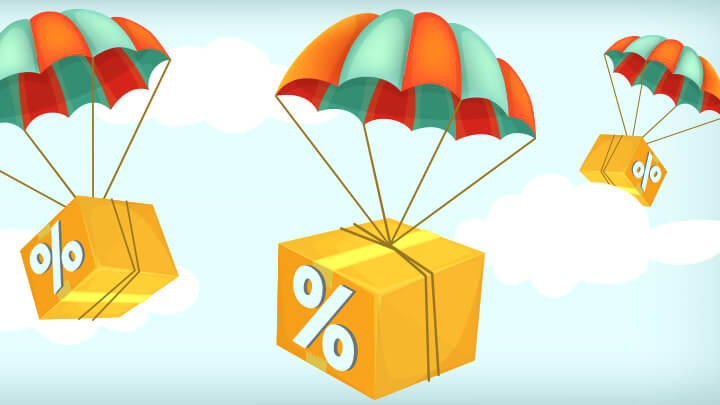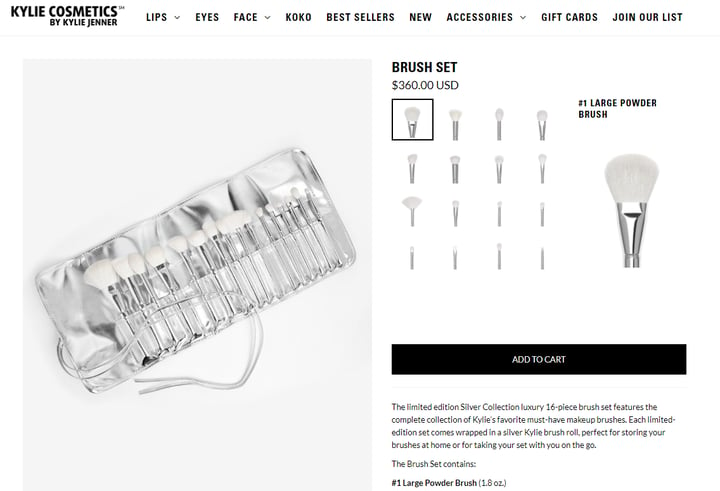SEO Tips for E-commerce: Improve Your Online Shop's Ranking in Google
SEO is an important tool for e-commerce businesses to bring in new customers. Here are the best tips for your online shop to rank higher in Google.

Dropshipping is a term that’s been used a lot in e-commerce circles in the past few years, but what is it exactly? Should your company use it? How can you get started? We’ll break down the basics for you, so that you can decide what’s best for your business.
Dropshipping is basically a method where a retailer sells products that they don’t actually keep in stock.
There are three main parties involved in the dropshipping model:
The customer: This is the end-user. They go to a website and buy a product. They generally don't know whether or not the item will be dropshipped. They basically only know the product, the price, the seller, and the delivery time.
The seller: This is the online shop. In essence, they are the middleman. They create the website (including the checkout) and set the prices. Once the seller receives an order, they will contact the wholesaler, who will then send the product directly to the consumer.
The dropship provider: This is the wholesaler, supplier, and/or manufacturer. They receive an order from the seller with the customer's delivery address and ship the product directly to the end-user. Generally, the manufacturers don't indicate their role in the supply chain on the packaging. Sometimes they have branding options for sellers to use their own labels on the products as well.
To summarise, when a customer purchases a product from the retailer, the retailer then orders the product from a third-party wholesaler or manufacturer, which ships the product directly to the customer.
This is in direct contrast to the classic retail model, where a retailer buys products from wholesalers in bulk, stores them in a shop or warehouse, and then ships the products out to their customers themselves.
Now that you know what dropshipping means, you’re wondering if this is a good option for your shop. Well, just like any business model, there are advantages and disadvantages.
Dropshipping has some great benefits, especially for new businesses. The biggest benefit of using the dropship model is that it requires very little upfront investment.
As mentioned above, the online retailer doesn’t have to stock up on inventory, and basically purchases the product from the wholesaler once the end-customer orders and pays for the product.
This means that the retailer doesn’t possess any of the products at any point and, therefore, isn’t worrying about buying in bulk, having a warehouse to store the products, or getting rid of excess products. By saving money on inventory and space to store your products, it’s quite feasible to start an online company with very little capital using the dropshipping method.
There are other benefits to using dropshipping for your online shop. Because you don’t have to worry about carrying a large stock, this also means you can offer a larger selection of products. Without having to manage a large warehouse full of products, running a dropshipping shop allows you to run your shop from anywhere in the world with an internet connection.

"I just sold 300 fidget-spinners! This trend will last FOREVER!"
(Shutterstock/Olga Danylenko)
Though there are a lot of great benefits from using a dropshipping model, there are some disadvantages to consider as well.
One of the biggest disadvantages for using the dropshipping method is that you are not in full control of the customer experience. In other words, if your wholesaler messes up a shipment, then guess who is taking the blame for that? Here’s a clue: not the wholesaler.
Though customer service issues are likely to come up no matter what kind of business model you use, it won’t always be easy to apologise and solve issues without having control of the inventory.
Speaking of shipping errors, shipping in general can complicate things. If you end up using multiple suppliers/wholesalers to take care of your inventory, you might have another problem on your hands.
Let’s say a customer orders multiple products in one order and the products all come from different suppliers. This might cost quite a bit in shipping for your customer. Naturally, you might not really want to charge the customer for each shipment because the high/multiple shipping costs might scare your customer away. You may have to bite the bullet and pay for at least part of the shipping on some orders.

Shutterstock/ESB Professional
Perhaps the biggest disadvantage of running a dropshipping business is the low profit margins. Think about it. You’re basically acting as another middle man in the supply chain.
Your business, on the other hand, is running with the least amount of risk by not having a large stock of products. Naturally, the wholesaler will mark up their prices to make up for this.
Another serious disadvantage to consider is that the wholesaler is probably selling to other retailers (i.e. your competitors). When you’re competing with other companies selling the same exact product, you’re basically getting involved in a pricing war. This generally leads to the lowest possible prices of any particular item, which means lower profit margins for the retailers.
However, if you sell enough products, then this disadvantage isn’t necessarily a bad thing, but it does mean you need to differentiate yourself in order to sell high quantities.
Take Kylie Jenner's cosmetics shop as an example. You can find a make-up kit for $360, while the purchase price at Alibaba is around $15.

You could try to sell inexpensive products with a huge markup, but that is usually much easier when you have over a million Instagram users, so this is generally the exception and not the rule.
If you don't have a million followers, then you'll definitely want to invest in some branding and online marketing campaigns.
Although it may seem like this selling method is ideal for online shops, it is possible to use it for almost any kind of business. For example:
Online shops are the obvious answer here. In a digital world, it is quite easy for orders to be processed and forwarded from retailers to suppliers instantly. In addition, this can keep inventory costs low, while also outsourcing warehouse responsibilities.
Online marketplaces (like Amazon or eBay) are also good for this method. As marketplaces can generate a lot of daily traffic, you can get a lot of exposure here, especially if you've found a great niche product. Naturally, there are disadvantages here. Amazon, for example, does not allow most sellers to promote their own brand (e.g. you can not direct these customers to your private website by placing coupons in your packages, etc.).
Retail shops (aka brick-and-mortar shops) can also use this model. However, this generally works best with large items (e.g. furniture) and/or expensive items. You can have display models out on the floor of your shop. If a customer buys this item, you can arrange for this item to be shipped from a manufacturer's warehouse directly. With such large items, this is generally accepted by customers. Naturally, this wouldn't work so well with smaller items like smartphones, etc.
Okay, you’ve weighed your options and decided that dropshipping is the best option for your business at this point in time. Great! So, how do you get started?
Your first step should be to find suppliers. However, they may not always be the easiest to find. If you know a specific product that you really want to sell, contact the manufacturer. Although they might not do dropshipping, they would probably be glad to let you know which suppliers are buying from them, and then you could reach out to them.
If you need some inspiration for products to sell, there are services available that offer you lists of suppliers. They often do quality control to ensure the services are legit. Though some of these supplier directories are free of charge, most of them are not. Wholesale Central is one example of a free one. An example of a paid one is SaleHoo (priced at $67 a year).
Attending trade shows is a great option as well. These are great opportunities to touch and feel the products you’re thinking of selling. You also get the chance to mingle and network, and perhaps get more insider information on what works and doesn’t work in your niche markets.

Niche markets can be very particular. Doing your research can be very helpful. (shutterstock/Tercer Ojo Photography)
However, with any of these choices, it’s important to do your research. Don’t be afraid to reach out to these manufacturers and suppliers to ask a few questions, though I would probably hold off on haggling with them on prices too much in the beginning. After building rapport with them, they’d probably be more open to cutting some deals with you.
So, it's clear that you'll need to find a supplier to ship your items for you. Because a lot of your success will lie in the suppliers' hands, there are a few things to keep in mind.
Unless you're selling a specialised product focusing on a specific niche, you'll probably want to consider a supplier with a large catalogue of products. If you intend for your shop to grow and eventually sell more products (and offer new product categories), then choosing a supplier that offers a wide range of products will make that growth easier.
On top of that, you'll want a supplier that constantly updates their offers. Oftentimes, there are new trends and "viral products" (remember fidget spinners). If your supplier stays on top of those trends, your shop can profit from them as well.
As mentioned earlier, one of the advantages of the dropshipping model is that it is perfect for the digital age. Many elements need to be synchronised (e.g. orders, catalogues, inventory, etc.) CSV files are the most basic method, but this can be a bit tedious.
However, many dropship providers offer more choice, from options that require some technical knowledge (such as an API to automate synchronisations).

Shutterstock.com/Vector_Vision
Make sure your supplier offers good terms and is transparent when it comes to responding to incidents, shipping faulty products, or handling returns and cancelled orders. It's also worth looking into whether or not the customer service is multilingual and can offer you personalised service.
With dropshipping, the internationalisation of a business is much easier than with a traditional sales method.If you have a dropshipping provider that covers deliveries to different countries, you'll have a little less to worry about.
Therefore, we advise you to look for a dropshipping provider that has agreements with various carriers, allowing you to sell to many different countries. However, remember that selling in a new country also requires work on your part: you need to translate your website and define a sales strategy that is geared to a different culture!
Returns are an integral part of e-commerce and it is important to plan ahead. In the event that there is any problem a customer's order, it is important that your supplier offers you a timely solution. Look for a provider that satisfies this aspect so that your customer does not get the wrong impression about your shop. You don't want them giving you negative reviews for something that is "out of your hands"!
Dropshipping has its advantages and disadvantages. With time, you can really reach a lot of customers and grow your business. And if you’re new to the e-commerce world, it could be a great way to dip your feet in the water and see if it’s something for you.
21/03/19SEO is an important tool for e-commerce businesses to bring in new customers. Here are the best tips for your online shop to rank higher in Google.
Valentine's Day has grown in popularity across Europe. We're sharing some romantic statistics (redundant, right?) and look at 9 marketing tips for V-day.